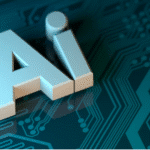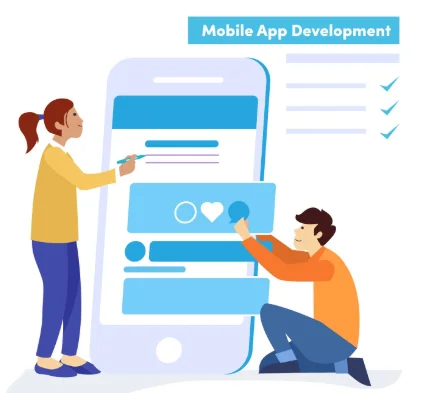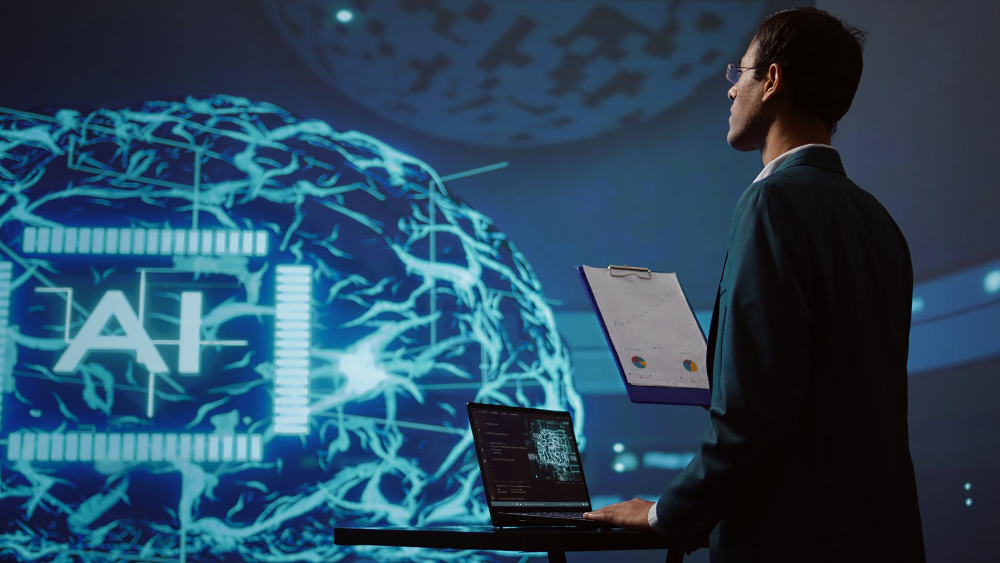Here comes the familiar stress. Department head walks over with that urgent expression everyone recognizes. “Need some graphics for the client presentation next week!” Congratulations, you’ve been selected. Fire up those bookmarked stock sites you always use. Browse through what seems like endless collections of disappointing choices. Everything either looks like it escaped from Windows 95 or costs more than your grocery budget. Spot something that’s remotely usable. Download with optimism. Try incorporating it into your design. Wrong aesthetic entirely. Colors don’t mesh with anything. Style feels completely off. Start the whole hunt over again with less time remaining.
Sound familiar? Most platforms think the fix involves adding more technological bells and whistles. Better search algorithms! Smarter AI recommendations! Premium subscription levels!
Icons8’s Ouch studied what makes this whole experience so frustrating and tackled the real underlying problems.
Why Current Illustration Platforms Create More Problems Than They Solve
Traditional stock sites operate like those massive outlet stores where everything’s scattered randomly across different sections. Walk around for hours hoping to find something specific. Occasionally, discover something decent buried under piles of irrelevant merchandise. Usually leave exhausted and still needing what you came for.
This chaotic approach might be entertaining for recreational shopping, but it’s terrible for professional design work with tight deadlines. Today’s projects require visual harmony across multiple platforms. Brand campaigns need graphics that complement each other. Mobile apps need illustrations that look crisp at every possible screen size.
Here’s the core issue: illustrations are designed as standalone artworks instead of flexible design components. When you can’t customize what you download, your creative choices get limited by whatever random inventory happens to exist rather than what your project requires.
Ouch throws this broken system out completely. Instead of rigid images, they provide customizable visual toolkits. Every illustration breaks apart into pieces you can edit and control. Characters function independently from background scenes. Colors update across all related components simultaneously. Objects relocate precisely where they’re needed.
This shift puts creative power back where it should be—with the designer doing the work. Project needs determine the final result, rather than stock inventory limiting your possibilities. Brand guidelines become realistic goals instead of wishful thinking.
Technical Innovation That Supports Creative Work
The platform’s technical foundation enables real flexibility without constantly breaking down. SVG files maintain their editable structure through changes. Color frameworks automatically distribute modifications across connected elements. PNG exports preserve transparency quality. Animation elements integrate smoothly with static graphics.
Performance stays solid despite this increased complexity. Files load quickly on slower connections. Email campaigns don’t get blocked by spam filters. Mobile sites don’t slow down because of oversized graphics files.
Mega Creator’s browser-based editing responds instantly to user actions. Real-time modifications show changes immediately. No loading screens interrupting creative flow. No mysterious processing delays that break concentration. This performance lets non-technical team members make sophisticated visual adjustments without learning complex software.
Format compatibility covers real professional requirements comprehensively. Lottie JSON enables advanced web animations without performance costs. After Effects integration supports motion graphics workflows. Standard formats like GIF and MOV ensure universal compatibility across platforms and legacy systems. SVG maintains perfect scalability across print and digital applications.
File optimization receives careful attention throughout export processes. Images load efficiently without visual compromise. Email deliverability stays reliable because file sizes don’t trigger spam detection systems.
Professional Use Cases Across Industries
Development Work: Graphics That Don’t Break Your Timeline
Every programmer has lived through this specific nightmare. The design team sends specifications featuring particular illustrations. You search everywhere for those exact graphics in implementable formats. They don’t exist anywhere in the known digital universe. Waste valuable development time hunting for alternatives that might work. Ship something that looks completely different from the original design vision.
This gap between design expectations and technical reality costs the software industry enormous productivity. Projects get delayed while teams hunt for workable visual assets. Emergency custom work blows budgets completely. Quality standards are compromised to meet shipping deadlines.
Ouch solves this through a developer-friendly technical implementation. SVG file structures that stay stable through modifications. Naming systems that work with automated processes. Multiple export formats that eliminate the need for a conversion tool.
API integration changes everything about asset management. Instead of manual downloading and file organization, development teams pull illustrations straight into build processes. Visual elements get proper version control. Environmental consistency happens automatically.
Performance stays predictable during implementation. Graphics load efficiently without quality loss. Animations run smoothly across different devices. Integration doesn’t require extensive optimization work.
Marketing Operations: Content Creation That Scales
Marketing teams face impossible content demands nowadays. Social platforms want fresh visuals constantly. Email campaigns need compelling graphics. Blog posts require supporting images. Everything must stay on-brand while working across different platform requirements.
Traditional approaches create bottlenecks that kill campaign momentum. Stock photos look generic and identical to competitor content. Custom illustration work takes longer than campaign cycles allow. Brand consistency becomes impossible when visual elements can’t adapt to specific needs.
Ouch’s modular system enables fast content creation without brand compromise. Marketing teams start with brand-consistent base illustrations and customize them for Instagram posts, Twitter graphics, email headers, and website banners. Colors adjust instantly for campaign themes. Layouts reorganize automatically for different size requirements.
Content production speed goes through the roof when you can modify visuals immediately. Campaign ideas get tested right away without waiting for design resources. Seasonal changes happen instantly. Competitive responses don’t require emergency freelancer budgets.
Educational Applications: Visual Learning That Works
Schools struggle with illustrations that enhance learning instead of just making textbooks look fancier. Standard business stock photos don’t help students understand scientific concepts or historical events. Random decorative artwork often confuses more than it clarifies.
Educational content needs visual precision that serves specific teaching goals. Illustrations must make complex topics more straightforward without adding mental overhead. Visual elements should reinforce what students are supposed to learn rather than distract from it.
Ouch meets these needs through education-specific collections organized around academic subjects. The sad clipart section provides emotionally accurate representations for psychology, social-emotional learning, and mental health education curricula.
Customization becomes crucial for teaching effectiveness. Educators modify illustrations to highlight specific learning points without expensive custom work. Teaching emotional recognition? Emphasize different facial expressions using color coding and explaining psychological concepts? Adjust visual components to focus on particular emotional states or behavioral patterns.
Research consistently shows better learning outcomes when complex concepts get targeted visual support designed for education rather than marketing.
Startup Economics: Professional Quality on Realistic Budgets
New businesses face tough choices about visual credibility. Professional appearance directly affects customer trust and investor confidence. Custom design work typically costs more than entire startup marketing budgets and takes months to complete.
Most early-stage companies accept mediocre visuals during critical growth phases when first impressions matter most. Cheap-looking graphics signal financial constraints that hurt credibility exactly when market validation becomes essential.
Ouch provides financially realistic options without sacrificing professional quality. Free usage works for prototype development and internal tools. Subscription pricing grows with business revenue instead of demanding large upfront payments.
The modular approach helps during inevitable business changes. Visual brand elements can be established early and modified as products, market positioning, and customer focus evolve. Brand consistency doesn’t require complete overhauls during strategic shifts.
Strategic Value Assessment and Market Position
Platform effectiveness should be measured through actual productivity improvements rather than feature lists or sales pitches. Ouch addresses specific workflow problems that create measurable inefficiencies in professional creative work.
Asset discovery time drops significantly through innovative organization and search that finds relevant content. Brand consistency improves through systematic style coordination within collections. Production speed increases through customization that eliminates the need to start from scratch repeatedly.
Time savings often justify platform costs before considering quality improvements or reduced custom design expenses. Workflow optimization enables higher-value work instead of routine production tasks that consume excessive time.
The illustration marketplace includes diverse approaches with varying strengths and limitations. Some competitors emphasize massive libraries with minimal customization options. Others prioritize animation capabilities but lack visual consistency across style collections.
Ouch occupies a specific position emphasizing systematic customization combined with solid technical implementation. This combination addresses workflow challenges that other platforms handle poorly or ignore altogether.
Implementation Strategies and Realistic Expectations
Successful platform adoption requires an honest assessment of organizational needs and capabilities rather than assuming universal benefits. Visual content requirements vary dramatically across industries, team sizes, and project types.
Organizations with regular illustration needs get maximum value from comprehensive platform features. Teams with occasional requirements might find simpler alternatives more cost-effective for their specific situations.
Platform optimization requires systematic approaches rather than random usage patterns. Clear guidelines for asset selection maintain visual consistency across projects and team members. Training investments accelerate adoption and maximize platform value.
No platform solves every visual communication challenge. Specialized content often requires custom solutions that exceed general stock modification capabilities. Industry-specific requirements sometimes need precision that general libraries can’t provide through customization alone.
Honest evaluation helps determine when platform solutions work effectively versus when custom alternatives become necessary despite higher costs and longer development timelines.
Understanding Platform Limitations and Alternatives
The illustration ecosystem offers various asset management approaches with different strengths and target audiences. Understanding options enables informed decisions based on specific needs rather than marketing appeal or platform popularity.
Some competitors offer larger libraries with less customization flexibility. Others focus on specialized industry applications or advanced animation capabilities. Pricing models and technical specifications vary substantially across platforms.
Competitive assessment should consider long-term organizational requirements rather than immediate needs alone. Platform switching involves learning curves, workflow changes, and migration costs that often exceed initial selection factors.
Industry-specific demands sometimes require precision and accuracy that general illustration collections cannot deliver through customization alone. Realistic evaluation assists organizations in determining when platform solutions function effectively versus when custom options become essential despite substantially higher expenses.
Future Development and Strategic Considerations
Digital design keeps evolving with new technologies and changing user expectations across platforms and devices. Platform evaluation should consider development roadmaps alongside current capabilities to avoid costly future migration needs.
Animation and motion graphics become increasingly crucial as digital experiences incorporate more dynamic elements. Platform flexibility affects adaptation to changing organizational needs without forcing expensive switches to different solutions.
Icons8’s Ouch represents a systematic approach to visual asset management that addresses real productivity challenges in professional creative environments. Technical capabilities provide measurable advantages for organizations with appropriate requirements and implementation strategies.
Success depends on realistic assessment and systematic deployment that leverages platform strengths while acknowledging limitations—the creative industry benefits from platforms that solve actual problems rather than adding unnecessary complexity.
Ouch moves in the right direction, though ultimate value depends on alignment with specific operational needs and resource constraints.

What Makes a Key West Spearfishing Company Stand Out From the Competition

A Comprehensive Guide to Performance Marketing Platforms and Tools

Data Automation Tools for Modern Businesses

Accelerating drug discovery through the DEL-ML-CS approach

AI in Marketing Is No Longer a Buzzword — It’s the Strategy

Is Singapore's 'Smart Nation' Initiative Making Renting Smarter, or Just More Expensive?

FSI Blogs US: Complete Guide, Insights, and Relevance

10 Things US Clients Expect from a Mobile App Development Partner








